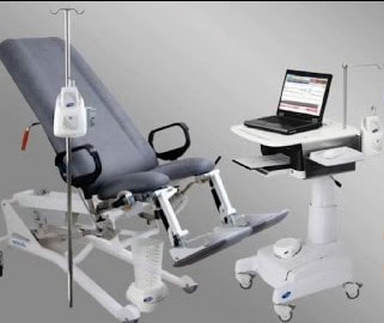URODYNAMIC TESTINGWhat is Urodynamic testing?
Urodynamic studies test how well the bladder, sphincters, and urethra hold and release urine. During the tests, your bladder is filled and emptied while pressure readings are taken from the bladder and abdomen. The idea is to replicate your symptoms, then examine them and determine their cause. Why is urodynamic testing done? These tests can show how well the bladder works and why there could be leaks or blockages.They are often done to investigate the type of your urinary incontinence whether it is stress, urge or mixed incontinence. Urodynamic tests are particularly important if surgery is being considered to make sure the correct operation is performed. |
How is the procedure performed?
The procedure usually takes about 45 minutes.
You will be instructed to arrive for testing with a full bladder. While you urinate into a container, the volume of urine and the rate at which the bladder is emptied are measured.
A thin flexible tube (catheter) is then inserted into the bladder through the urethra, and the volume of any urine remaining is measured (post-void residual or PVR)
The bladder may be filled with water through the catheter until you have the first urge to urinate.
the amount of water in the bladder is measured at this point, then more water may be added while you resist urinating until involuntary urination occurs.
More sophisticated testing uses electrodes placed on the perineal skin to measure the electrical activity of the muscles while the bladder fills.
What to expect during recovery?
Most people have urodynamic tests without experiencing any problems. You may feel a slight burning sensation on urinating due to the placement of the catheter, or you may find a small amount of blood in your urine.
If symptoms last more than 24 hours, you should contact the office.




